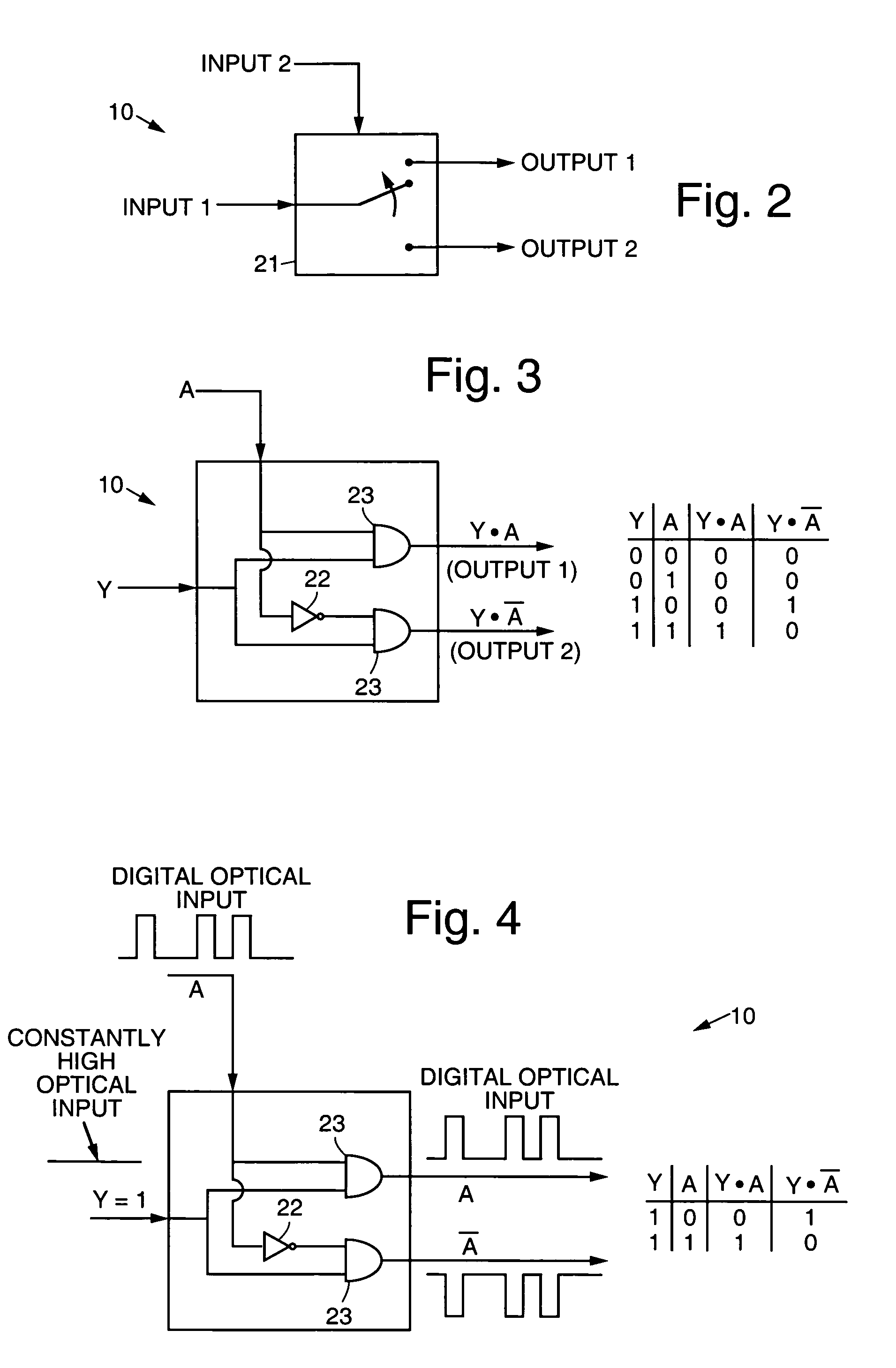Optical memory and logic using cross-switches
a logic and optical memory technology, applied in the field of optical memory, can solve the problems of not being very small and randomly accessible to fiber delay lines
- Summary
- Abstract
- Description
- Claims
- Application Information
AI Technical Summary
Benefits of technology
Problems solved by technology
Method used
Image
Examples
Embodiment Construction
[0024]Referring to the drawing figures, FIG. 1 illustrates an exemplary cross-switch 10 in accordance with the principles of the present invention when observed at an oblique angle. The exemplary cross-switch 10 may be used to implement an all-optical, asynchronous binary storage cell, wherein the cross-switch 10 employs optically induced total internal reflection. The binary cell is a building block for a programmable all-optical random access memory (AORAM) device, which enables circuits and networks that require optical buffers.
[0025]In order to simplify the definition of a binary memory cell, several logic gates and their functions are described below. Corresponding all-optical equivalent logic gates using cross-switches are also described. As defined herein, the term “all-optical” refers to the directing of optical data signals as a result of optical control signal inputs without the need for conversions between optical and electrical domains.
[0026]The all-optical switch 10 is ...
PUM
| Property | Measurement | Unit |
|---|---|---|
| total internal reflection | aaaaa | aaaaa |
| optical output | aaaaa | aaaaa |
| optical | aaaaa | aaaaa |
Abstract
Description
Claims
Application Information
 Login to View More
Login to View More - R&D Engineer
- R&D Manager
- IP Professional
- Industry Leading Data Capabilities
- Powerful AI technology
- Patent DNA Extraction
Browse by: Latest US Patents, China's latest patents, Technical Efficacy Thesaurus, Application Domain, Technology Topic, Popular Technical Reports.
© 2024 PatSnap. All rights reserved.Legal|Privacy policy|Modern Slavery Act Transparency Statement|Sitemap|About US| Contact US: help@patsnap.com










